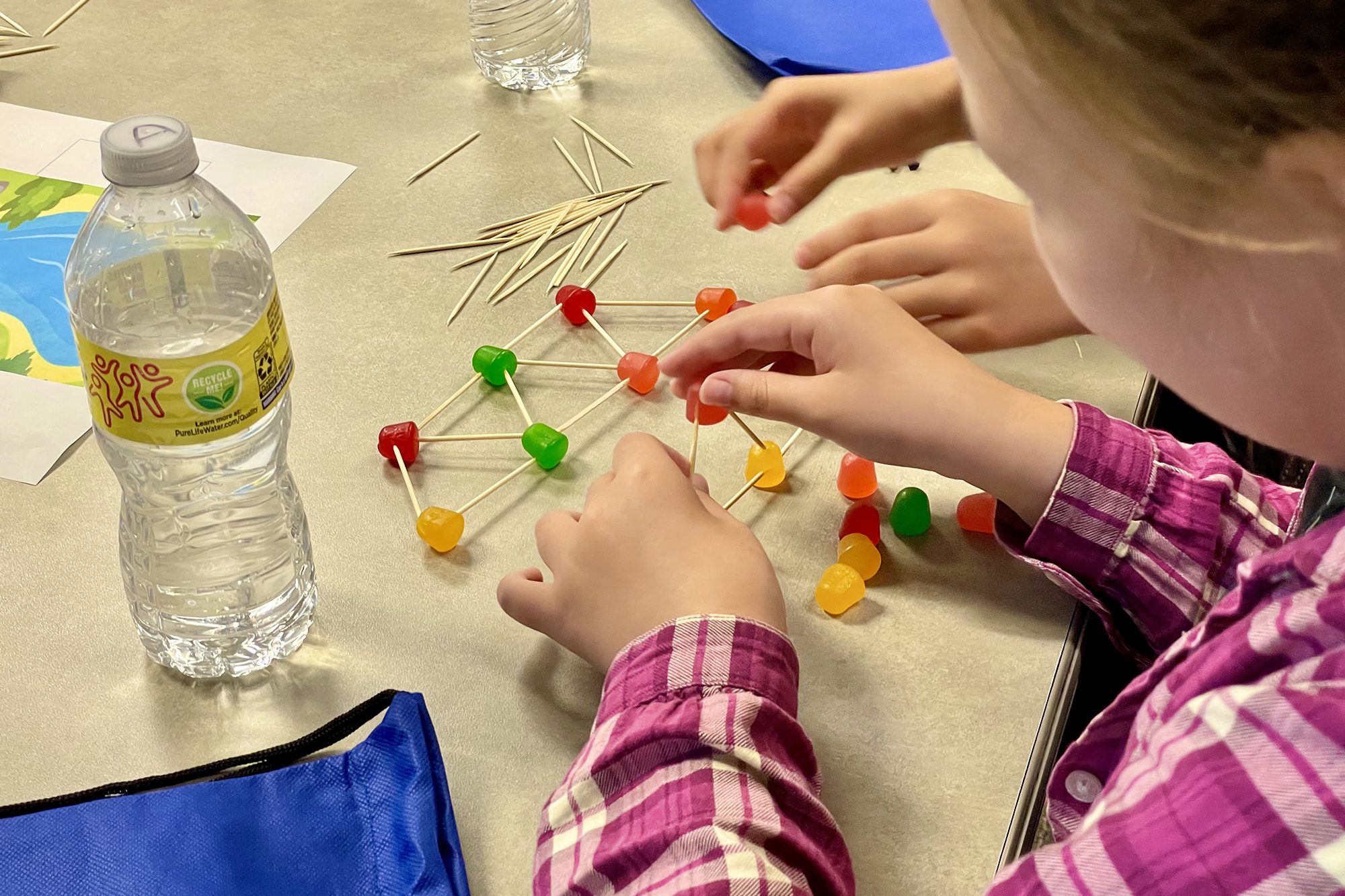June 20, 2022

Glenn Gilyot doesn’t need convincing that STEM Cubs is an exciting and effective endeavor. As the educational day camp’s graduate assistant coordinator, he has witnessed children’s curiosity, laughter and high-fives in real time. But when he reads parents’ exit-survey comments describing how the mini-scientists can’t stop talking about activities from the event, he “gets it” on another level.
“Moms and dads say, ‘when we got home, they went on and on about the rockets’ or ‘the glitter germ demonstration’ or ‘the cloud experiment,’” said Gilyot, a PhD candidate in chemistry. “Hearing that the kids took that enthusiasm home with them tells me we’re doing this right.”
For six years (with a break in 2020 due to the pandemic), STEM Cubs has invited K–5 students to the University of Missouri to ignite their imaginations by exploring science, technology, engineering and mathematics. Most importantly, STEM Cubs seeks to engage students from underrepresented and low-income backgrounds.
The thrice-yearly program is presented by the College of Education and Human Development, the College of Engineering and the Division of Inclusion, Diversity and Equity’s Office of Access and Leadership Development — with funding from the Veterans United Foundation.
This year’s summer installment expanded to include grade 6–8 students through STEM Cubs Middle Connection. Between the two programs, nearly 80 children participated, and about 30 MU students, faculty and staff volunteered to work at the event.
“We expanded into middle school programming for two reasons,” Gilyot said. “We want to continue providing STEM learning opportunities for students beginning to think about careers, and to reach students we might have missed in our K-5 programming. We also want to provide a pipeline of content that carries forward into their STEM education and career exploration in high school and beyond.”
Hands-on projects for the middle schoolers included constructing miniatures of energy-efficient buildings and experimenting with models to explore how viruses spread. For the younger students, lesson topics included electricity, plant vs. animal cells and bridge engineering. Participants signed up for a half-day or full day of programming, with lunch provided.
Laura Zangori — an associate professor of science education who researches how to support teachers and students in constructing scientific explanations — used funding by the National Science Foundation to develop the projects offered in the inaugural sessions of STEM Cubs Middle Connection.
“It’s important to provide experiences for students to see the excitement of STEM learning and explore ways to make the invisible visible,” Zangori said. “We are also experiencing a critical shortage of STEM middle school and secondary teachers — particularly in Missouri — as well as STEM professionals representing a range of diversity and backgrounds. Research suggests that students decide whether science is for them by about age 11, so the earlier we can provide these experiences, the greater the opportunity to retain these students in STEM teaching and STEM professions.”
Original article provided by Show Me Mizzou.